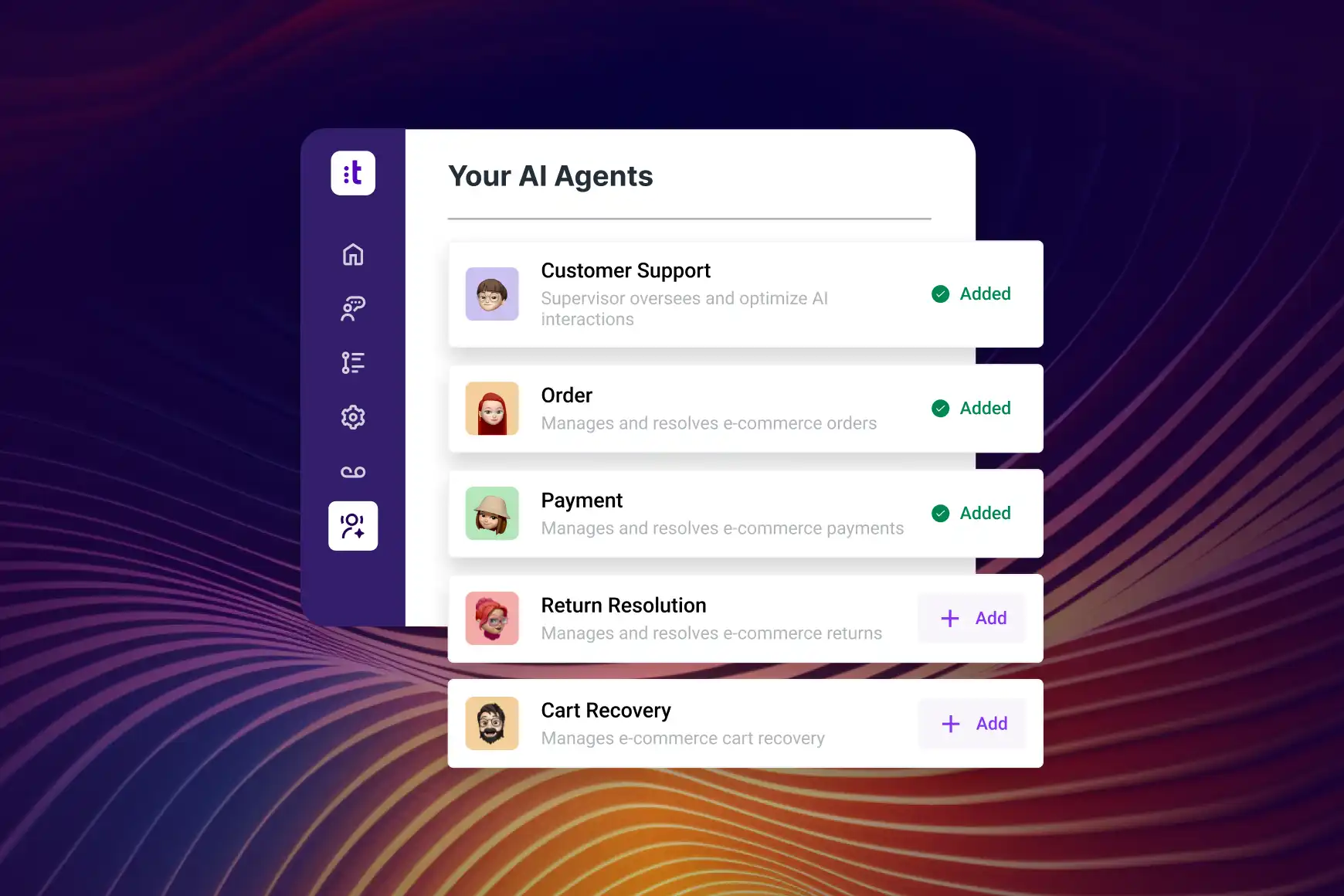The end of monolithic AI: Here’s why you really need a multi-agent architecture

By Pedro Andrade
0 min read

As a part of my job, I’ve had a front-row seat to the evolution of artificial intelligence (AI) in the contact center. We’ve moved from simple IVR systems to sophisticated, single-purpose bots. It is true that each step has brought incremental improvements, but it is also clear that we are now on the cusp of a revolutionary leap that moves beyond the limitations of isolated AI and into the collaborative power of a multi-agent architecture.
Back in 2017, when the first bots made their debut, the world eventually accepted a fragmented and often frustrating customer experience, in exchange for “some automation”. The reason? The underlying AI is often a collection of stitched, rigid workflows. Each bot is a specialist in its own narrow domain, operating in isolation. This linear and brittle approach is fundamentally broken.
At Talkdesk, we are building the future of customer experience on a different foundation: a multi-agent AI architecture. This isn’t just a technical upgrade; it’s a paradigm shift.
Decentralized decision-making: Your complex problems, solved in a single flow.
Imagine a customer facing a multifaceted issue—say a billing discrepancy tied to a technical problem that also involves your company’s return policy. In a traditional situation, this would trigger a cascade of transfers between departments, and the customer would have to repeat their story over and over, leading to a frustrating customer experience and agent burnout.
With a multi-AI Agent platform, however, that experience can be very different. Multiple specialized agents work together dynamically, coordinating through an orchestration agent to resolve the issue in a single, seamless interaction Each agent is capable of independent planning and decision-making, and they collaborate to achieve a shared goal. There are no handoffs and no loss of context, making it possible to automate complex, multi-step problems.
Think of it as a problem serious enough to call your team into a meeting to figure out a resolution. Each team member will provide feedback according to their perspective and expertise. This discussion, with your orchestration, leads to individual actions that come together to drive the desired solution.
Emergent intelligence and adaptability: AI that learns, not just follows.
For better or worse, the world of customer service is anything but static. New products are launched, policies change, and unexpected issues arise, like unclear pricing or undocumented limitations on the service provided. Traditional, prescriptive AI workflows, with their rigid, top-down logic, simply can’t keep up. They assume every possible scenario can be anticipated and hardcoded, but that’s a flawed premise in today’s business dynamics.
In a multi-agent system, agents don’t just follow instructions; they learn, adapt, and evolve. By reasoning together, they often discover optimal solutions that weren’t explicitly programmed. This “emergent intelligence” allows them to adjust to changing conditions in real time, without the need for constant reprogramming and redesign. Your AI becomes a living, breathing part of your customer service organization, continuously improving with every interaction.
Effortless extensibility: Grow your AI as you grow your business.
As your business expands, so do the needs of your customers. With a traditional AI workflow, scaling isn’t as simple as just adding another bot. It often requires a complete redesign and retesting of the entire system, increasing your time-to-market and operational overhead.
A multi-agent architecture, by its very nature, is designed for effortless scalability. Need to add a new skill or integrate a new tool? Simply plug in a new agent. The system self-organizes and integrates the new capabilities into its existing processes. This modular approach allows you to adapt and grow your AI capabilities with the agility your business demands.
Interoperability: The Foundation of a truly open AI ecosystem.
I believe the future of AI is open. No single vendor can provide all the specialized AI your business needs. A multi-agent architecture is the foundational enabler of a truly open AI ecosystem. By establishing standard protocols for agent-to-agent communication, we are making it possible to integrate AI agents from different platforms and vendors.
This creates a distributed digital workforce of specialized agents that can collaborate, even across organizational boundaries, to achieve complex goals. For instance, in a customer service scenario, our AI agents can handle a product return by coordinating with an industry-standard payment agent to issue a refund, and then interact with a third-party CRM agent to update stock levels. Each agent performs a specialized role, yet they work together seamlessly across systems.
The era of monolithic, inflexible AI is over. The future of exceptional customer experience lies in the collaborative power of a multi-agent architecture. At Talkdesk, we are not just envisioning this future; we are building it. We are creating an AI-powered customer service organization that is as dynamic, adaptable, and interconnected as the customers it serves.

Talkdesk CXA
Customer Experience Automation
Unleash the power of automated AI to transform service, sales, and support across your entire organization.







